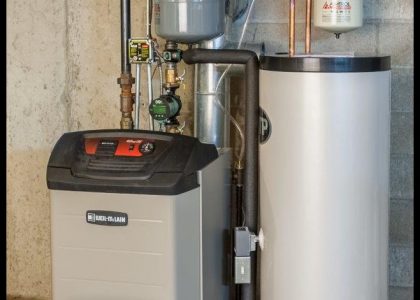Our post is motivated by recent instances of poor chimney relining and their effects on heating system operation. It seems that some installers are gaming or ill-advising consumers with poor installation practices. Again you, the customer should set the requirements and not the service provider!
There is no substitute for consumer education, and let us preface by merely stating: Your chimney must match or exceed the boiler or furnace manufacturer’s exhaust specification. Their requirement will always be found in your appliance manufacturer’s Installation Manual. With few exceptions (obsolescence?) these are available on manufacturer websites. Occasionally a tradesman’s account may be necessary or require a direct contact.
The first question to resolve is that your chimney actually needs relining. This is a question to be resolved by your Local Jurisdiction Home Inspector. There may be a further economic value adder to your real estate to consider. Do not assume however that updating a heating appliance should necessitate a flue relining. A newer generation boiler for example will typically exhaust at a lower temperature and volume of combustion products.
Presuming a relining is in order, the diameter (or it’s effective sectional area – length x width) requirement of your appliance must be determined and specified. Your existing flue may in fact be larger than necessary, but again specify your appliance manufacturer’s required diameter or cross-sectional area.
There are two (2) common materials used as chimney liners, stone refractory tile and stainless steel. The former is typically used in new masonry construction, but can be retrofitted into and old chimney where downsizing to accommodate it with filler is available. Corrugated, flexible, round stainless steel liner is currently the most popular and to abuse the terminology a “quick & dirty” fix, albeit somewhat pricey. It is also vulnerable to cost-cutting and shoddy practices.
Let’s explore recent examples to qualify our observations and statements:
Case 1: A Public Weatherization Program Installation
Seven (7) years ago this home was retrofitted with a Weil-McLain WTGO-3 Boiler with a 7″ Exhaust Flue and 8″ Dia. Chimney Requirement. The chimney was relined with a 6″ Dia. Stainless Steel Liner. The Boiler Flue Piping was then “frenched”, i.e. slit, tapered and forced into the 6″ Liner extension and sheet metal screwed to secure. It must be added that the original chimney was unlined, 12″ square brick construction. The chimney clean-out was removed and the base filled with scrabble and mortared to just below the flue outlet. The larger initial flue cavity permitted the bending of the 6″ Liner to act as the flue outlet as well. A chimney-top weather cap was installed (reducing draft) to eliminate rain & snow from running down the chimney and then into the Galvanized (rusting) 7″ Exhaust Flue Pipe.
Upon firing, despite a burner 15 second “pre-purge” cycle, the flue Barometric Damper inverts with a bang, expelling an amount of flue product into the basement area, but quickly recovers to positive draft as the chimney liner warms. Firing the boiler with the service port open similarly delivers a blast of flue gases. The liner bend is accumulating fly ash, reducing draft as well.
The Agency stands by its Qualification Test Results. The Statute of Limitations has expired.
Case 2: Another 6″ Dia. Chimney Relining – Weil-McLain 468 Boiler with 7″ Exhaust Flue
Here we go again! Same Town, a few streets away. Same installer? Wish we knew …..
We were solicited for a planned, immediate boiler replacement. Customer lamented that existing boiler was rumbling and pulsating, running erratically since a chimney relining. Can’t imagine why ….
Installed a Weil-McLain UO-3 with a Pressure-Fired Beckett NX Oil Burner, 6″ Exhaust Flue. “Runs like a top” …..
Case 3: Our Duplex WGO-6, 400KBTUH Installation – Municipal Facility – Relined Chimney
Existing 12″ x 12″ Brick Chimney was relined with a 12″ Dia. Stainless Steel Corrugated Liner to suit system requirement. The installer expressed frustration with the “scrape fit” install, then fitting into a 12″ Stainless Tee flue outlet, etc. Has had an appropriate Chimney Weather Cap installed and has performed flawlessly for many years.
There are more than a few variables to consider in relining a chimney, IF it is necessary. We have purposefully presented a trio of cases that exhibit a worst, a fixable and a proper case to show a progression of conditions to consider for your application.
We are not Chimney Liner Installers, but we like yourselves have to specify them, live with them, or fix them. Always work from your appliance specifications, current or planned to determine your requirements. You can get a little stretch by pressure-firing, particularly with oil, but doing it right the first time wins every time.
09/10/2020 P.D.M., Sr. (Updated 11/18/2022)

